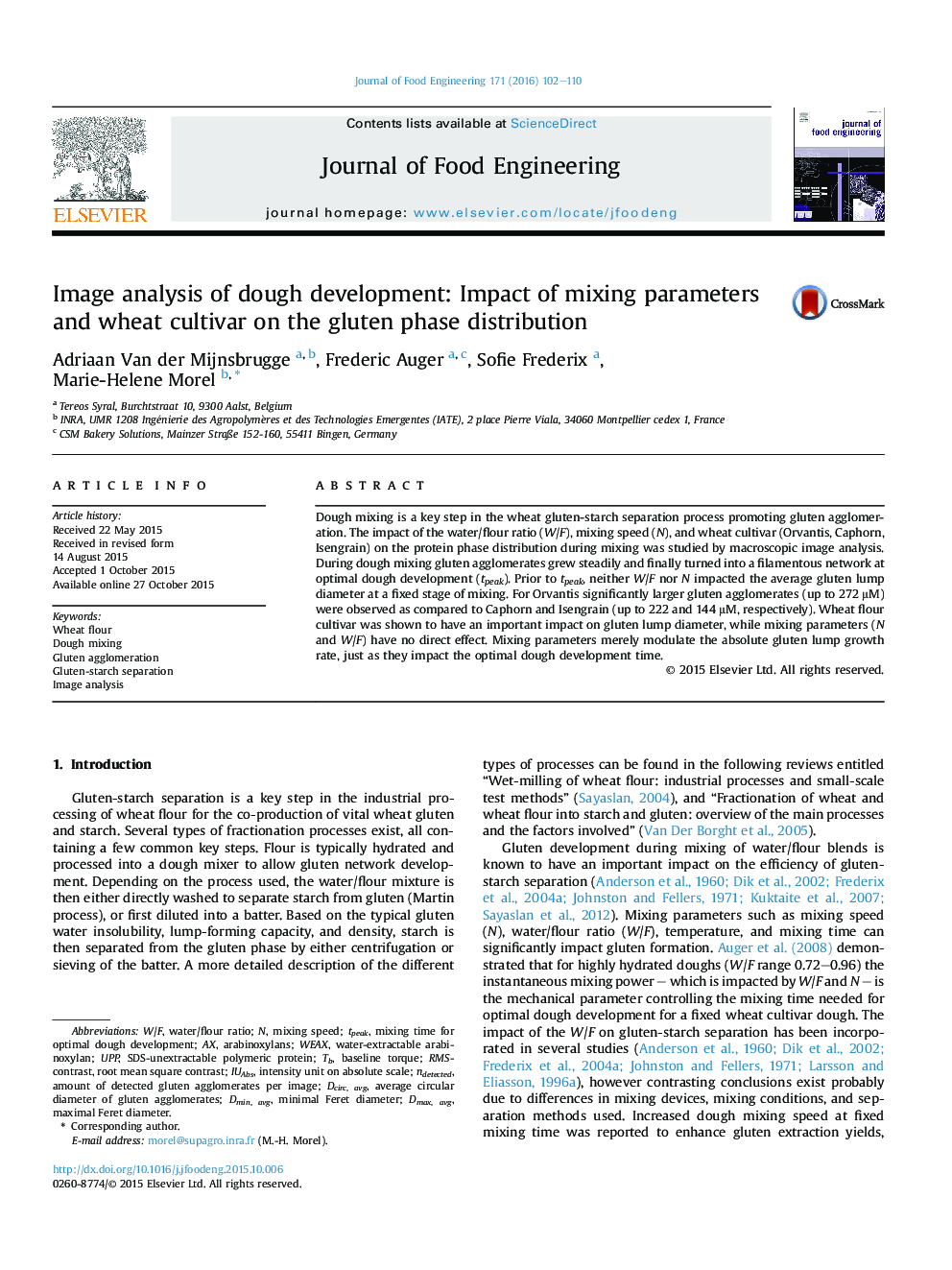| Article ID | Journal | Published Year | Pages | File Type |
|---|---|---|---|---|
| 222784 | Journal of Food Engineering | 2016 | 9 Pages |
•Protein phase distribution during mixing was studied by macroscopic image analysis.•The wheat cultivar has a major impact on the size of gluten agglomerates.•Cumulative deformation by mixing impacts the developed gluten network morphology.
Dough mixing is a key step in the wheat gluten-starch separation process promoting gluten agglomeration. The impact of the water/flour ratio (W/F), mixing speed (N), and wheat cultivar (Orvantis, Caphorn, Isengrain) on the protein phase distribution during mixing was studied by macroscopic image analysis. During dough mixing gluten agglomerates grew steadily and finally turned into a filamentous network at optimal dough development (tpeak). Prior to tpeak, neither W/F nor N impacted the average gluten lump diameter at a fixed stage of mixing. For Orvantis significantly larger gluten agglomerates (up to 272 μM) were observed as compared to Caphorn and Isengrain (up to 222 and 144 μM, respectively). Wheat flour cultivar was shown to have an important impact on gluten lump diameter, while mixing parameters (N and W/F) have no direct effect. Mixing parameters merely modulate the absolute gluten lump growth rate, just as they impact the optimal dough development time.
